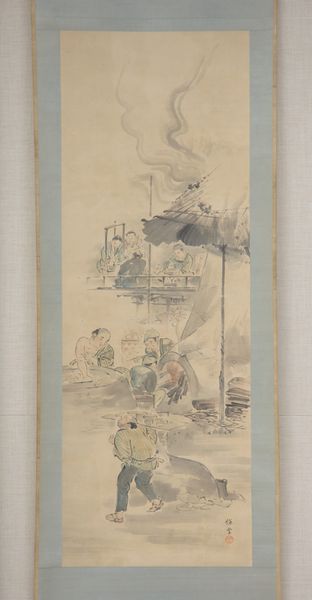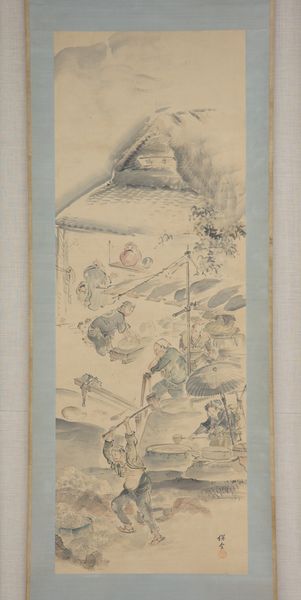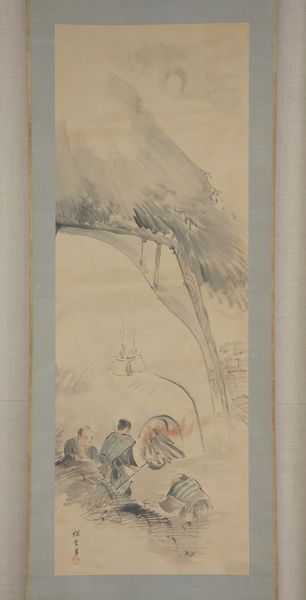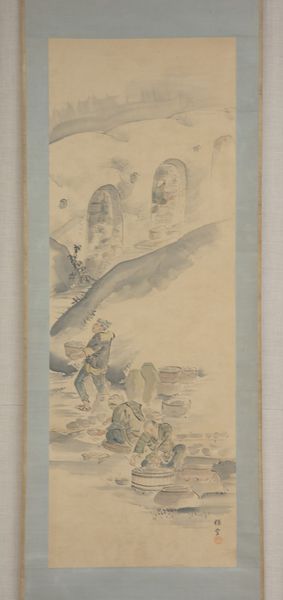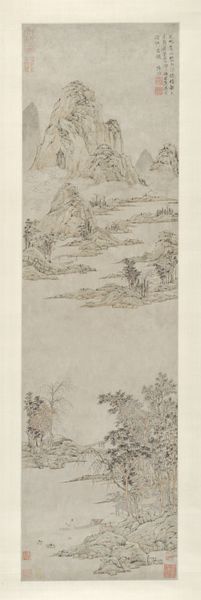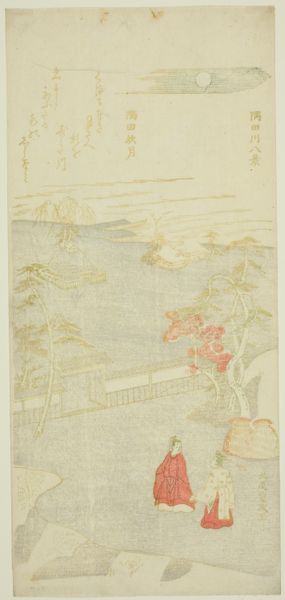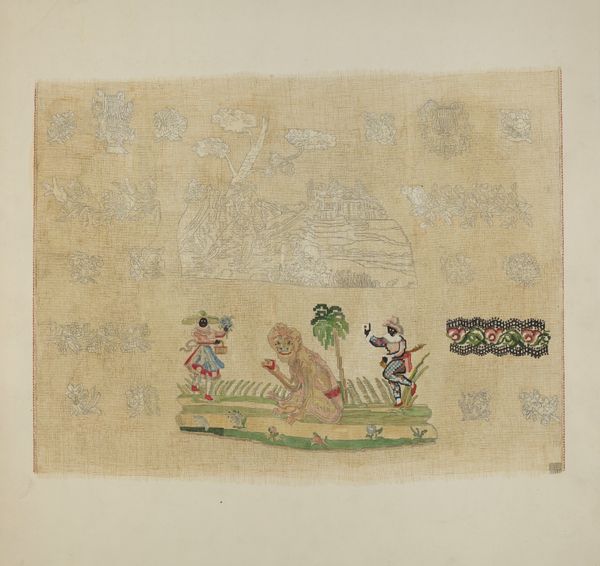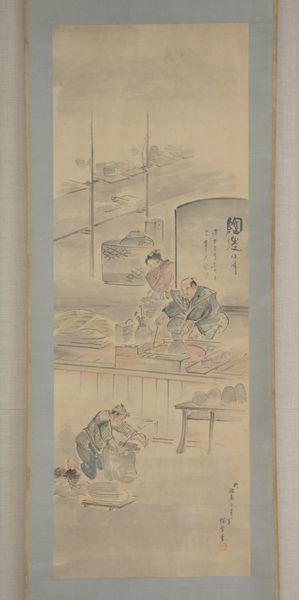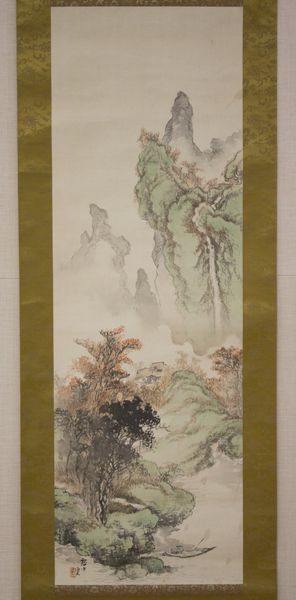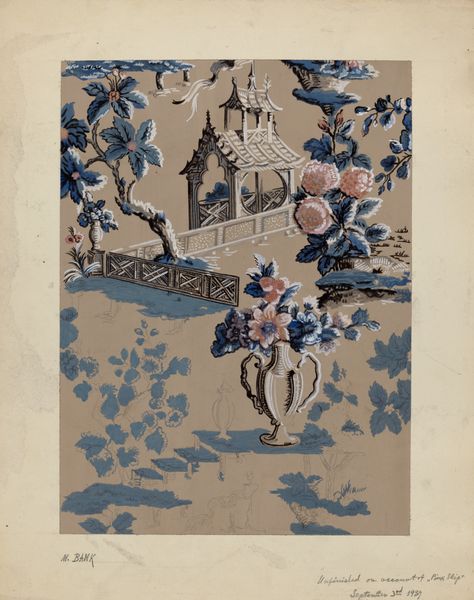
painting, print, watercolor
#
water colours
#
painting
# print
#
asian-art
#
figuration
#
watercolor
#
men
Dimensions: Overall: 47 1/2 x 16 7/8 in. (120.7 x 42.9 cm) Overall with mounting: 67 1/4 x 21 7/8 in. (170.8 x 55.6 cm) Overall with knobs: 67 1/4 x 23 3/4 in. (170.8 x 60.3 cm)
Copyright: Public Domain
Curator: Let's discuss "Making Ceramics", a painting rendered in watercolor. The artwork comes to us from Eiraku Hozen and is estimated to have been completed sometime between 1800 and 1854. Editor: Its airy quality is quite striking, isn't it? The restrained palette and delicate brushstrokes create a serene, almost ethereal atmosphere. The figures seem to exist in a world softened by light and water. Curator: Indeed. Hozen's choice of medium and the loose handling of the pigments greatly contribute to the mood. Notice how the artist constructs spatial depth using layered washes, creating an atmospheric perspective, yet one that lacks precise spatial relationships. Editor: This work is incredibly revealing about ceramic production during that period. It almost acts as a piece of social documentation, revealing production methods of workshops that supported art, commerce, and a local labor force. I wonder about the intended audience of these types of figural pieces that appear to represent daily labor? Curator: Absolutely. Considering this as social commentary enhances the image's potential meanings. Still, one can argue the function is primarily pictorial—with an intention to showcase artistic skill—as we analyze the organization of line, form, and color within its pictorial space. What do you observe regarding the rhythmic placement of shapes and the variation in tonal values? Editor: Perhaps what draws my attention is how "art for art's sake" developed differently in varied cultures during the 19th century, with Asian artists producing objects that appear visually focused, while simultaneously embodying an illustrative purpose, unlike some developments we see among their European counterparts. The subdued colors and soft edges contribute to a cohesive visual experience, even while depicting a bustling work environment. Curator: In this environment the shapes and the play of light and shadow are carefully orchestrated to lead the viewer's eye through the scene and across the surfaces of forms, to ultimately construct visual harmony, don’t you think? Editor: Undeniably. But recognizing its place within Japan’s aesthetic and economic history helps explain its dual commitment to beauty and function. Curator: Precisely! Together, our approaches unlock deeper dimensions of "Making Ceramics", enriching our understanding. Editor: A truly collaborative revelation. This helps inform and engage contemporary perspectives!
Comments
No comments
Be the first to comment and join the conversation on the ultimate creative platform.
